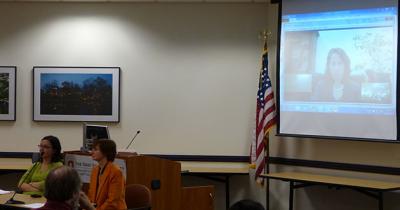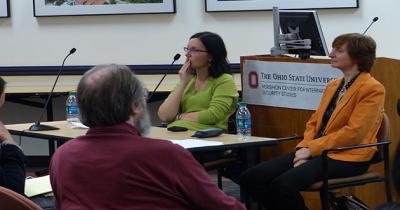By Ayleen Keeton
Since the spring of 2015, the world has watched as increasing numbers of refugees have journeyed from the

Middle East to Europe in search of better lives and stability. Images of the refugees’ plight and the different paths they have taken to reach Europe were widely shown in all types of media outlets over the summer and fall as the countries of the European Union and the United States held meetings to discuss how to address the situation.
On Oct. 26, the Center for Slavic and East European Studies, Departments of History and Slavic and East European Languages and Cultures (DSEELC), and the Mershon Center for International Security Studies sponsored the round table “The Refugee Crisis in Europe: The View from Central and Southeast Europe” featuring professors Theodora Dragostinova (History), Yana Hashamova (DSEELC) and Jessie Labov (DSEELC).
Professor Dragostinova focused on the crisis from a historical perspective. She argued that there is an irrational

fear about cultural compatibility and many citizens raise economic concerns about job displacement due to the influx of refugees. However, this is the not first time that Europe has been faced with such a number of refugees. WWII also led to large refugee waves across the continent.
The next section of the round table, led by Professor Hashamova, focused on how Western news sources such as the BBC or CNN employ circular reporting to hyper sensationalize coverage of the situation and how refugees are portrayed. Rather than reporting objective facts, they use emotional imagery with very little real, concrete information that distorts the reality of the situation.
Currently in Hungary, Professor Labov, the third member of the round table, concentrated on how Hungarian politicians and society are responding. In particular, the prime minister of Hungary and other politicians have constructed the image of the influx of refugees as invaders threatening Hungarian and European culture. This in turn has led to a debate within Hungarian culture, as well as within in the larger European Union, about what are the ideals of Europe and what path Hungary will take in the future. The discussion concluded with the consensus that it was unclear how the European Union would respond and whether they could come to any type of agreement about how to assist, process, and integrate refugees. These questions are further amplified by the misinformation in the media and politicians using the refugee crisis for political purposes.
